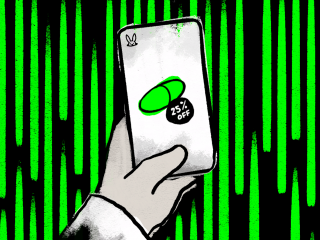This article first appeared in the March 2021 edition of Money Magazine.
If the last few decades have taught us anything, it is that we should be doing what we can today rather than leaving it until tomorrow. If we don’t, never mind; it’s not the end of the world – oh… wait. Some of our best-laid plans can often go askew, and that could prove to be a boon. If these unexpected, life-changing (or world-changing) curve-balls don’t prompt us to be agile and quickly react in full force as one collective voice, then we don’t know what will. Reactive agility is the backbone of every revolution – design-related or otherwise.
Reactivity does not work in a vacuum. It can only work successfully when reactive supports that which has been planned for.
Design that is well established does not need to change based on the time in which an audience consumes it. Products and services naturally go through their own life cycles that are governed by emerging technologies and cultural shifts. But the core of everything we do – our identity – merits the groundwork of a well-thought-out strategic blueprint that is equipped to creatively adapt to the times while maintaining its integrity.
Developing timeless design is much simpler than anyone thinks; it is far from being easy, but it is straightforward. It starts and ends with unequivocal commitment. Explicit commitment is the bedrock of every successful relationship and that is something that (though intangible) can be felt by the individuals who identify with a brand to the point where they feel like they own part of it. This is probably the closest we get to ‘magic’.
But what do we mean by commitment? We are referring to the soul-searching process we go through when building and committing to an identity along with every visual element we deliberately choose to call our own. Sometimes it might take a few false starts – not everything works out fine on the first try. Some relationships don’t work from the get-go; some need tweaking and sometimes they might need to be thrown out of the window to rebuild over the mistakes of the past.
We see the success of visual commitment in brands like Omega or National Geographic. Every article of design these brands produce strikes a sublime balance of functional form and approachable exclusivity. National Geographic makes a simple but bold statement through its minimal yellow square that literally frames the subjects they are highlighting. This essential element works so well that some think that the viewers might miss it – but they do not miss it at all. The visual aspect of these brands take on the trends of the times in their application, but the strong core elements anchor the visual changes back to the original design DNA.
Timeless means looking back at the classics and extracting their core to fit the past, present, and future. Our recent work with The Athenaeum Spa saw us building upon the design legacy tied to the Corinthia Hotel brand. From the core logo to every bit of collateral, every material, ink, and foil were hand-picked to fulfill one purpose – uplifting guest’s lives by carving out time to themselves. The mark we created was built to live as part of the Corinthia heritage, yet still keeping a voice of its own. This then evolved into seamless patterns which were embossed on boards and stitched onto robes. Through the subtle application of these core elements, we created a strongly-branded experience that is almost invisible at first glance, but evident the moment you look for it. It is more about feeling than it is about seeing.
Another example that comes to mind was the journey Switch embarked on with eCabs to build their refreshed brand and design. Even though the company had been on a constant evolution, eCabs required the final step in the progression of its visual voice that would stand the test of time. Stripping any unnecessary ornamentation and reducing the kit of design elements to leave the bare fundamentals to reaffirm eCabs’ identity was essential. Design-wise, eCabs has to ooze functional and beautiful ‘mass production and mass adaptation.’ It’s a bit like Bauhaus. The amazing thing about that design movement is that the fundamentals they produced almost live in a time-vacuum – they are visually relevant (and, importantly, look good) within any context at any time in history, from their origins until today. And they will likely do so until the end of time.
We future-proofed the eCabs visual language for any opportunity related to mobility and beyond. And time has shown us that the decisions we took are already fulfilling their purpose. During times that challenged us to be reactive on a daily basis, the solid foundations we built for the brand made adapting and reacting a walk in the park. Part of us – secretly – can’t wait for the next curve-ball life throws at us and we’ll be there, hand on the holster, ready to fire back.




